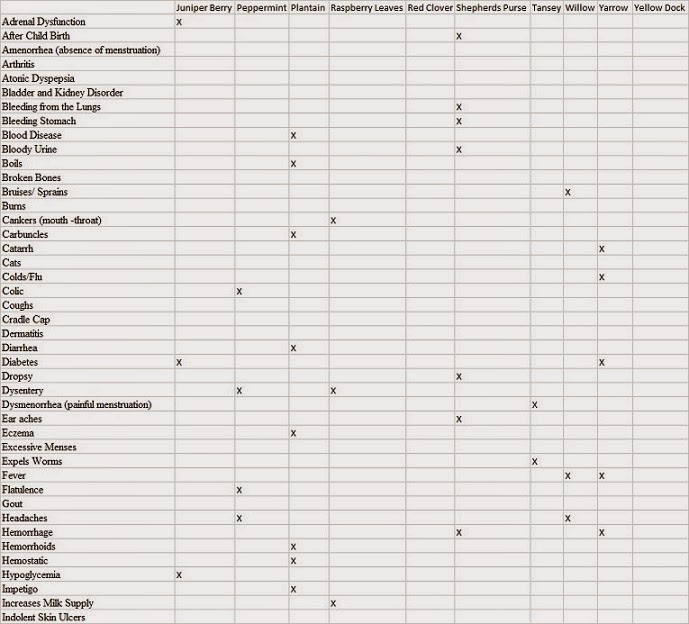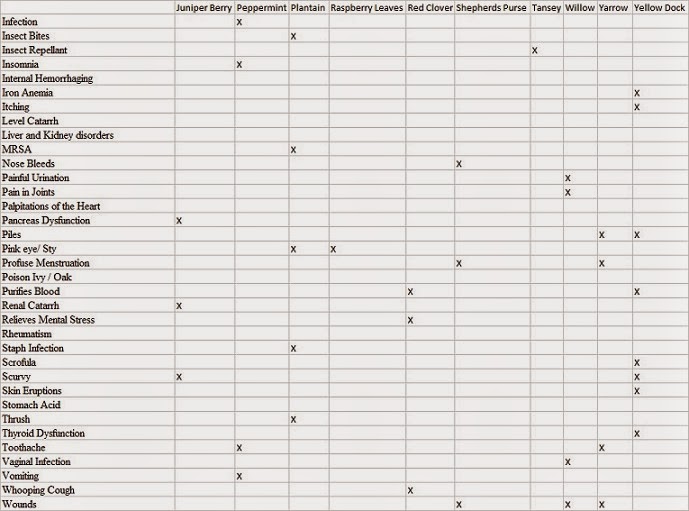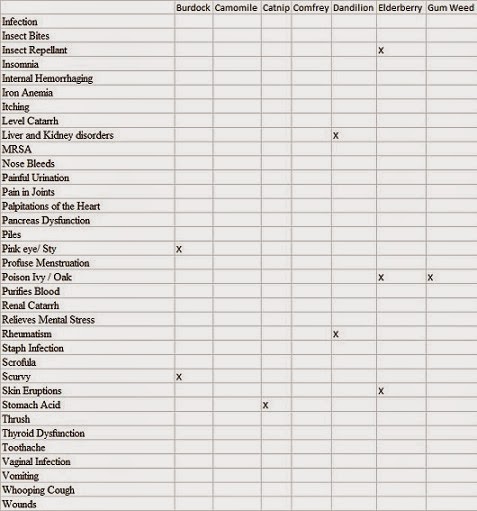This is an entry in the 2014 Aug./Sept. writing contest with a combined prize value of over $1066. Be sure to rate this article – your vote is important!
One of the single most important things you can do in your disaster preparations is to begin now. The time to learn about natural agriculture and natural medicines is not in the midst of the disaster. We are in a time where people are totally dependent on others for their food and medicines.
There is a disconnection between the food we eat and ourselves be it animal or vegetable, and the medicine that exists in the world around us.
There are many ways that you can learn about food and medicines that are found in nature. Here on Honey Bunny Farm we are continually learning about new and sustainable ways to farm, as well as learning more and more about the plants that grow around us and their food and medicinal properties.
We are fortunate that there is a large variety of plants that grow here on Honey Bunny Farm and the ones that don’t are just a short walk away.
Here in the United States the landscape and climate is so diverse that there are plants that only grow in certain regions. There are also, however, many plants that grow throughout the whole United States. These plants include: Burdock (Arctium lappa), Chamomile (Matricaria recutita), Catnip (Nepeta cataria), Comfrey (Symphytum x uplandicum, Symphytum officinale, Symphytum asperum), Dandelion (Taraxacum officinale, Elderberry (Sambucus family), Gumweed (Grindelia squarrosa), Juniper Berry (Juniperus communis), Peppermint (Mentha piperita), Plantain (Plantago major), Raspberry (Rubus idaeus), Red clover (Trifolium pretense), Shepherds Purse (Capsella bursa-pastoris), Tansy (Tanacetum vulgare), Willow (Salix family), Yarrow (Achillea millefolium), and Yellow Dock (Rumex crispus).
The plants that are specific to your region are important to research and become familiar with. They can provide both food and medicine for you and your family. When first becoming acquainted with these herbs and plants in your area it is vital that you consult with a person who is experienced in identifying and gathering these plants and herbs. They can also help you to understand and use the plants correctly. (Click here to see an excellent book on identifying edible weeds)
The internet is also a good resource if you are unaware of such a person in your area but be sure to use a reputable site for your identification. (Also click here to see an interview Marjory did with the best book on Botany). We try to have at least 3 different verifications from people who we trust before we begin to use any new plant.
In our research for natural medicines to use on the farm we have found many herbs that are used for many different medical problems. We have included a chart at the bottom* of herbs and plants and what each plant is used for.
The only plants that we included in the chart are plants that are found in the entire contiguous United States. These can be found coast to coast and border to border.
We encourage you to research the use of each of the plants and begin to prepare a personal pharmacy of homemade medicines that are crucial for you and your family.
The easiest, in my opinion, to start with is a salve to replace the commercial anti-bacterial salve that may be in your cupboard. We have converted over entirely to homemade plantain salve. It can be used on people and on animals as well, just make sure that each species gets their own tub of salve unless you only use clean applicators such as cotton swabs or wooden coffee stirrers. If you do wish to use wooden coffee stirrers they can be obtained in bulk from big box stores and cut in half with a pair of old scissors. A supply of these can actually last for quite some time if you are not using them by the handful. Do not double dip into a tub with a used applicator.
We use a Plantain Salve for our cuts, scrapes, bruises, stings, poison ivy and other skin irritations. It is a simple recipe that is easily made in large batches as it does not go bad. There is also no petroleum jelly in this recipe which is a major ingredient in store bought salves.
Ingredients:
2 cups of olive or almond oil (if there is a nut allergy stick with olive oil)
2 T. Plantain leaf (Plantago major)
2 T. Comfrey (Symphytum x uplandicum, Symphytum officinale, Symphytum asperum)
¼ cup Beeswax pastilles
½ tsp grapefruit seed extract or vitamin E oil to preserve
Optional ingredients include:
1 tsp Echinacea root
1 tsp Calendula flowers
1 tsp Yarrow flowers
1 tsp Rosemary leaf
The first step in making a salve is to infuse the herbs into the oil. This can be done in one of two ways, whole herbs can be placed in a stainless steel or glass oven proof pot and covered with the oil. Heat this to 170 degrees for 3 hours turn off the oven and leave in the oven for 12 hours or overnight.
When cooled, strain off the herbs through a cheesecloth, let all the oil drip out and then squeeze the herbs to get the remaining oil. For the second method you will chop the herbs and place them in a clean glass jar with the oil, cover with an airtight lid and leave for 3-4 weeks, remembering to shake it daily. After 3-4 weeks strain off the herbs through a cheesecloth, let all the oil drip out and then squeeze the herbs to get the remaining oil.
Feel free to infuse your oil with the method you are most comfortable.
You will discard the herbs after they have been strained out of the oil.
Heat the infused oil and the beeswax in a double boiler until they have melted and mixed.
Pour this into your container of choice and allow it to cool completely before using.
Another vitally important resource for life is food. There are many “weeds” that are in actuality a fabulous source of necessary vitamins and minerals.
Dandelion which contains vitamin A, vitamin C, and beta carotene.
Red Clover (Trifolium pretense) blossoms can be eaten fresh or steeped in hot water for a delicious tea, the leaves and stems can be eaten. Red Clover is also a source of calcium, chromium, magnesium, niacin, phosphorus, potassium, thiamine, and vitamin C.
Plantain leaves can be sautéed and eaten like other tough greens such as Kale. Plantain contains vitamin A, Vitamin C and a small amount of iron.
Watercress (Nasturtium officianale) this plant contains vitamin C, vitamin K, vitamin A, Beta-carotene, riboflavin, niacin, copper, calcium, potassium, magnesium, manganese and phosphorus. Burdock (Arctium lappa) first year plants can be eaten but second year plants should not be eaten. If you are unsure of the age of the Burdock do not risk it. The outer rind is removed and the inner stem is cooked and tastes of asparagus.
One of the powerhouse “weeds” is Purselane (Portulaca oleracea) this plant contains more Omega-3 fatty acids than some fish oils, it also contains one of the highest amounts of vitamin A in a leafy green vegetable. It is a rich source of vitamin C and some B-complex vitamins such as riboflavin, niacin, and carotenoids as well as iron, magnesium, calcium, potassium and manganese. Purselane grows very well without help and can be used as a supplement to your animal feed. We humans eat it as well as the ducks, rabbits, goats and llama. I have found that it grows higher and is more stalk-like when it grows with other taller stalk-like weeds. It grows shorter and more like ground cover if it has room to spread. We have it in the garden, in the cracks of the cement pad, and down the edges of the gravel driveway. It truly likes to survive and can be a huge benefit to your diet in the case of a disaster. It can also be introduced to your diet now to reap the health benefits that it provides.
If you choose to have animal protein in your diet you will want to have a source of that in the case of a disaster. The most common way to get animal protein is to go the market and buy some that has been farmed, butchered, and brought to you. Should we lose this service we should have a way to produce our own animal protein.
Rabbits provide what I like to call the 3 F’s of life, Food, Fiber and Fertilizer. The nutrients found in rabbits include protein, fat, cholesterol, minerals include zinc, sodium, potassium, calcium, magnesium, iron, vitamins include Thiamin, Riboflavin, Niacin, Pyridoxine, Pantothenic Acid, Vitamin B12, Folic Acid, Biotin, Amino Acids include Leucine, Lysine, Histidine, Arginine, Threonine, Valine, Methionine, Isoleucine, and Phenylalanine.
A rabbit is very easy to raise and quite easy to butcher on your own. Rabbits can be fed the same plants that you eat yourself should commercial feed be unavailable to you. From two rabbits, a male and female, you can increase your herd and have a continuous source of protein.
To enhance our dog’s and cat’s diets we collect the hearts and livers and use them to add beneficial nutrients. The ribcages of the rabbits are boiled and the meat is cleaned off for the dogs and cats to supplement their diets as well.
The entrails of the rabbit can be fed raw to your dogs but we choose to use only the hearts and livers which we cook. The broth can be used to make soups, I personally use it to soften the food for my puppy and for the very old cats. It is very nutritious and does not contain the salt that commercial stocks and broths contain. (Marjory Wildcraft provides an excellent tutorial for home butchering rabbits in her DVD set).
Fiber is provided by specific breeds of rabbits, we breed angora rabbits, German and French. We have just introduced a bit of English into our line. Every 90 days we shear them and use their fiber to create roving which we then spin into yarn. Clothing can then be made from the fiber.
We like to spin other fibers such as mohair from the angora goat or other sheep fiber to cut down on the heat retention from the pure angora fiber.
While we don’t eat our angora rabbits they can be used as food if you want to focus on one breed of rabbit. The meat rabbit pelts can be tanned and used as a source of clothing material as well.
The 3rd F, fertilizer is a natural consequence of rabbit ownership. What goes in must come out and it comes out in one of the greatest green fertilizers that we have found. It does not contain toxic chemicals and while it is certainly OK to compost the rabbit pellets, it does not need to be composted before it is used in the garden. We have found that mixing it right in to the dirt is a simple and effective way to use their bunny berries and keep it from going to waste. We truly try to use all the parts of the rabbit.
It is also important to remember that we will do better if we are used to the foods that we plan to eat during a disaster. I highly recommend introducing some or all of the plants that you plan to eat should we lose supermarkets. This allows your family’s digestive tracts to adjust to the foods and should a family member be sensitive to a plant you have the time to research more or alternatives to those plants. One of my favorite sayings is “An ounce of prevention is worth a pound of the cure” if we choose to prepare now for what may occur we will be that much better off. The preparation that you do now may very well save much heartbreak later.
See the Honey Bunny Farm blog at www.honeybunnyfarm.blogspot.com.
This is an entry in the Aug./Sept. 2014 [Grow] writing contest with over $1,066 in combined prizes. Please be sure to rate this article your vote counts!
Winner’s Prizes (be sure to support our sponsors):
- a copy of the “Grow Your Own Groceries” DVD video set, $42 value
- a copy of the “Alternatives To Dentists” DVD video, $32 value
- a year of free membership in the Core Community, $120 value
- a complete Royal Berkey Water Filter System, $240 value
- a Bug Out Seed kit from the Sustainable Seed Co, $40 value
- the complete “The Summer of Survival” interview series, a $97 value
- the complete “2014 Grow Your Own Food Summit” interview series, a $47 value
- a 14 day organic food supply, herbal first-aid kit, and more from Ener Health, a $240 value
One winner and two honorable mention’s selected from the top three contributed entries. Click here for full contest rules and to enter your article!










COMMENTS(0)
Great article, and thanks for the Herb Chart! We raise rabbits for meat and fertilizer and both are excellent! We recently made some rabbit breakfast sausage using the spices from a kit we bought along with our LEM Sausage maker and they were delicious!